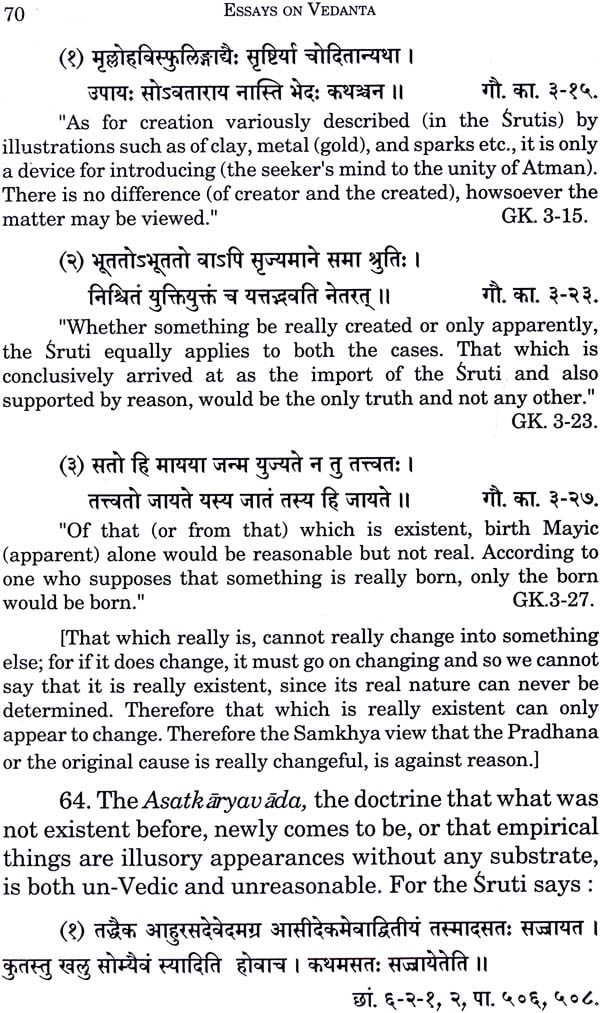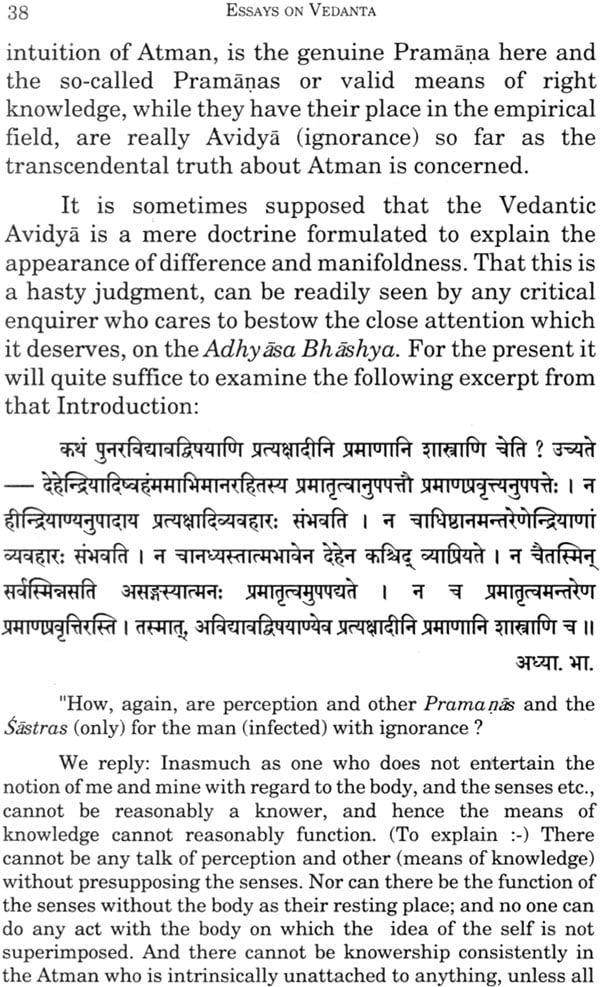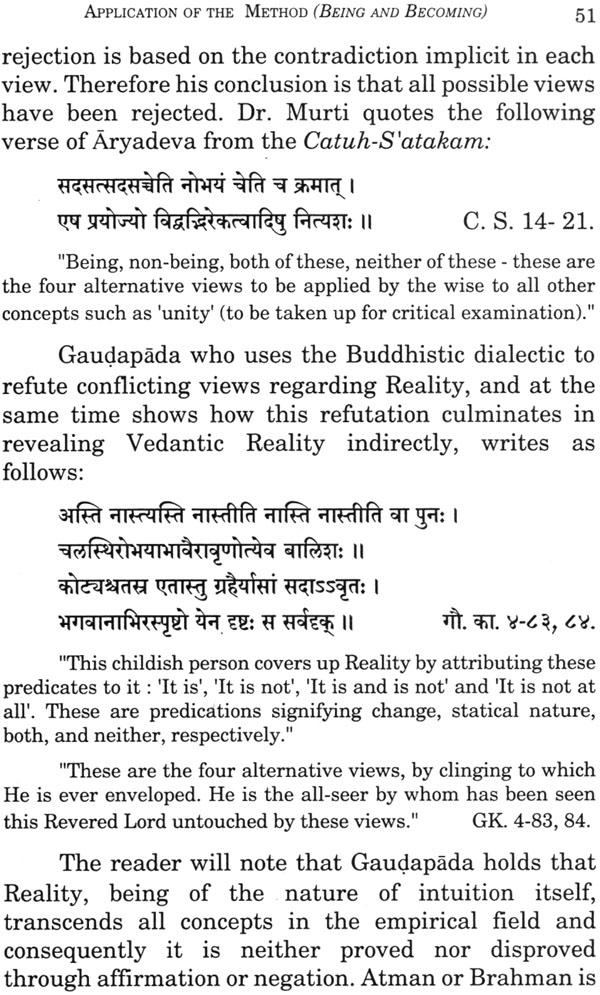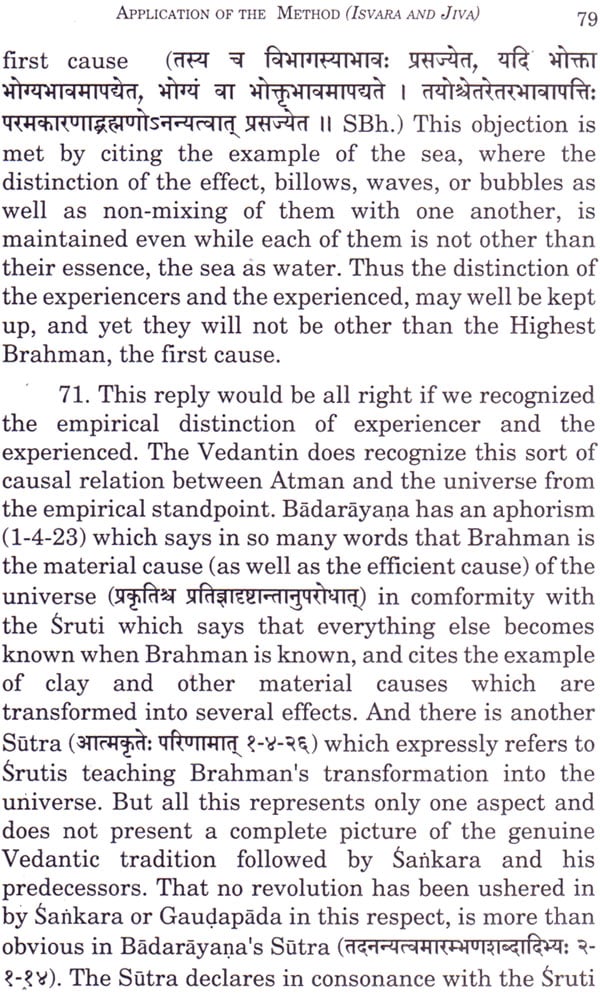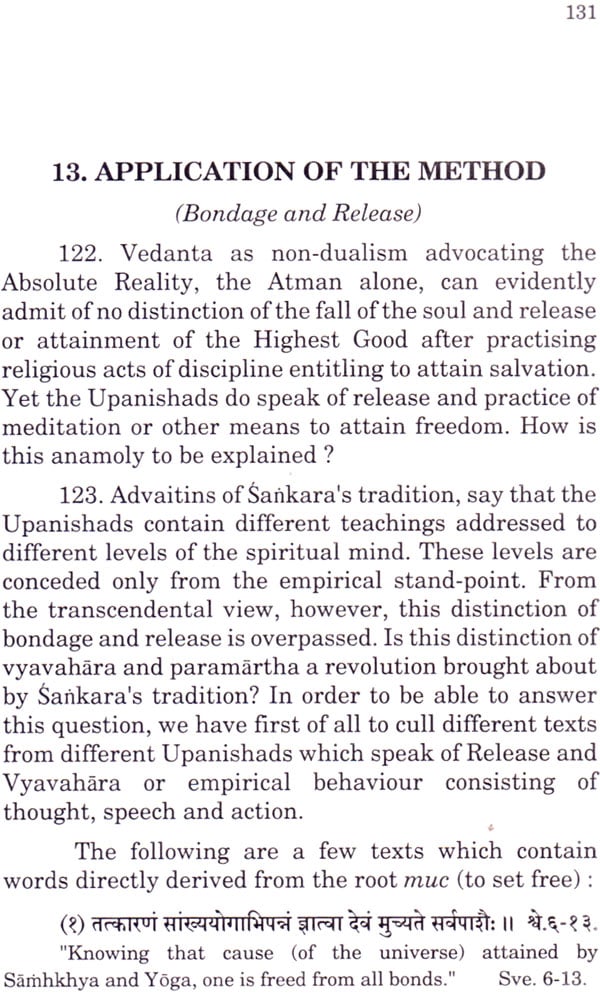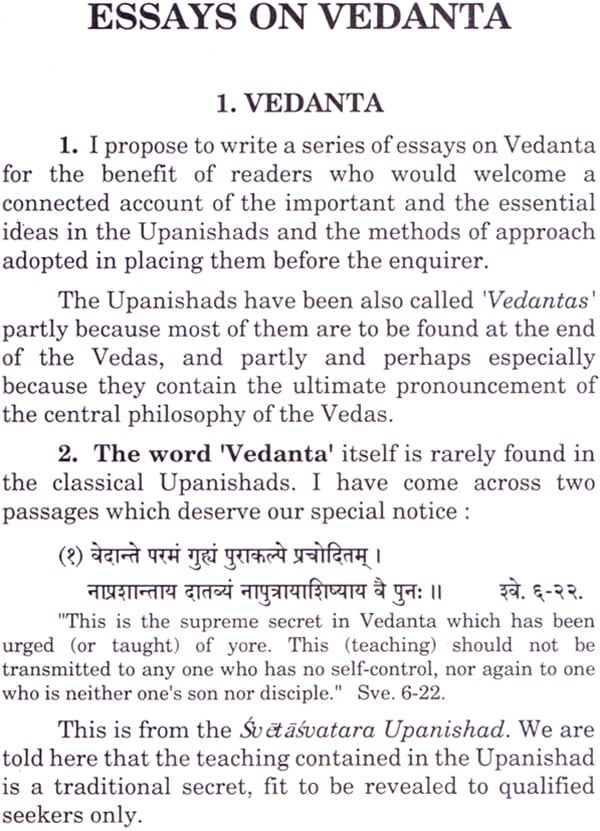
Essays on Vedanta
Book Specification
| Item Code: | NAB747 |
| Author: | Swami Satchidanandendra Saraswathi |
| Publisher: | Adhyatma Prakashan Karyalaya, Bangalore |
| Edition: | 2008 |
| Pages: | 190 |
| Cover: | PAPERBACK |
| Other Details | 8.7 inch X 5.5 inch |
| Weight | 260 gm |
Book Description
Back of the Book
About Swamiji
Sri Sri Satchidanandendra Saraswathi Swamiji (1880-1975), the founder of Adhyatma Prakasha Karyalaya, Holenarasipur, was the celebrated authority on Shankara Vedanta during the twentieth century He researched and worked with profound dedication and a missionary zeal throughout his life for bringing out and present to the seeker the pristine pure Advaita Vedanta according to the tradition of Gaudapada, Shankara and Sureswara. He is reverentially hailed as Abhinava Shankara of the twentieth century.
Shankara who appeared more than a thousand years ago recovered the true spirit of the Upanishadic Texts and the Vedantic Tradition from the multitude of wrong interpretations prevailing at that time. Sri Sri Swamiji who appeared on the scene during the last century devoted his life time to recover the pristine pure Vedanta of Shankara and the tradition of Adhyaropa Apavada Prakriya of the past Masters by cleansing the distortions and misrepresentations of Shankara in the post—Shankara sub—commentaries, collectively known as Vyakhyana Prasthanas.
Sri Sri Swamiji was an erudite scholar, a prolific writer and a great organizer. He wrote over 200 books in Kannada, English and Sanskrit, including Kannada translations of all the original and genuine works of Shankara. All his writings are characterized by precision, lucidity and erudition. Many of his independent books like Vedanta Prakriya Pratyabhijna, Mandukya Rahasya Vivriti and Kleshapaharini (commentary on Naishkarmya Siddhi) in Sanskrit, Essays on Vedanta and Salient Features of Shankara Vedanta in English, Paramartha Chintamani and Shankara Vedanta Sara in Kannada are real master pieces.
Sri Sri Swamiji's life is an inspiration and a model and his writings are a real boon for all the earnest seekers.
The beginner student of Vedanta is likely to see a contradiction when on the one hand the Upanishads teach Brahman or the Real Atman, the One Absolute Reality without a second, on the other his own experience and knowledge is that of a universe of manifoldness and variety.
In these Essays, the revered Swamiji helps the student to understand the teaching of the Upanishads correctly, by stressing on the saying of the knower’s of the traditional method ‘That which is devoid of all multiplicity, is explained by means of (deliberate) superimposition and rescission’ and on the doctrine of the distinction of the empirical view and the vedantic view Thus the earnest student would be able to see how Vedantins who seriously hold on to the Upanishadic teaching of Advaitic Brahman can talk in the same breath of avidya and Maya, cause and effect, God and creatures, states of consciousness and pure consciousness and such of consciousness and pure consciousness and such other distinctions which can apply only to a pluralistic Universe.
That our author is firmly rooted in the tradition of the past Masters like Gaudapada and Shankara is obvious from the fact that the Essays are more like a garland of beautiful flowers with numerous and apt quotations from their works as well as the Upanishads stringed together by a common thread of thought.
These essays were originally proposed to be published in the ‘Adhyatma Prakasha’, the Kannada monthly journal of the Institution. But on second thoughts, it was decided the, in view of the importance of the subject-matter, they had better be brought out in a handy book form.
We hope that the work will be deemed to be a valuable introduction to more voluminous productions such as ‘How to Recognize the Method of Vedanta’ already published in the Karyalaya.
The copies of the first edition of 'Essays on Vedanta' had been sold out long back and there has been a demand from the readers of Vedanta books in English both from India and abroad. The book is now reprinted after making necessary corrections.
The students of Vedanta will find it very difficult to capture the main teaching of the Upanishads by reading the various commentaries on them, as they are too numerous and embody conflicting interpretations by the Bhashyakaras and their sub—commentators.
As our author writes in his Introduction, it is most necessary to discover the cardinal doctrine and the distinctive technique or the method which governs all the modes of approach to reality in the Upanishads. With his deep insight in to the Vedantic lore he suggests that the students of Vedanta should carefully note the distinction between the empirical or the vyavaharic view and the Sastraic or the Paramartha view of the Vedanta. He writes in the concluding Chapter that the language and style specially devised for suggesting the nature of Brahman, which is unobjectificable by word or thought, and the negation method called the Adhyaropapavada Nyaya must be thoroughly understood, if the study of the Upanishads is to yield any tangible or beneficial result.
Needless to say that the present book serves as an excellent introduction to the central doctrine of the Upanishads and to the One Method of approach uniformly employed in all of them in leading the inquirer to the intuition of the Absolute Reality which is his very Self.
The Karyalaya intends to reprint its various books as and when demand arises, and therefore solicits suggestions from the readers. The readers are welcome to visit our website www.adhyatmaprakasha.org to learn about the activities of the Karyalaya.
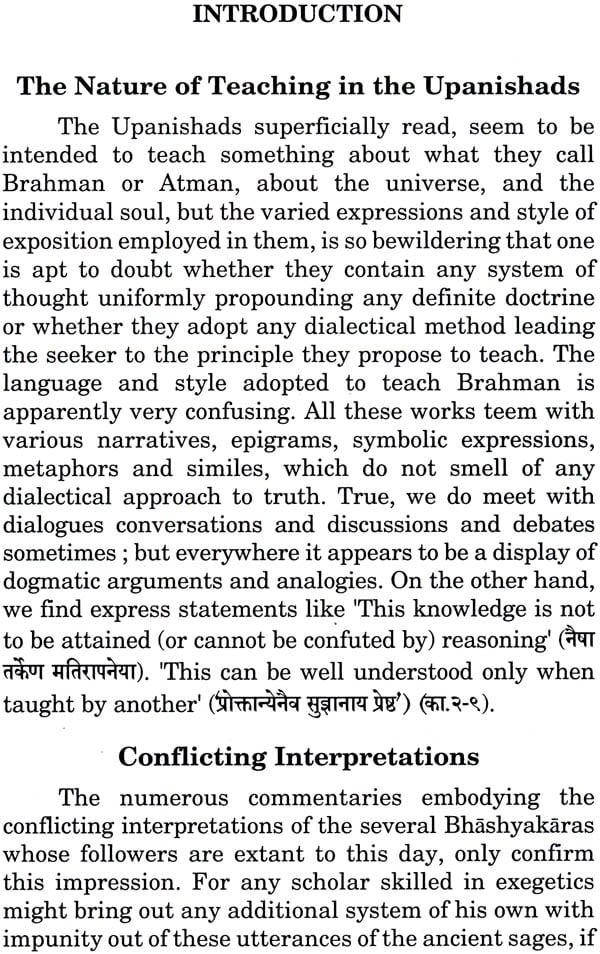
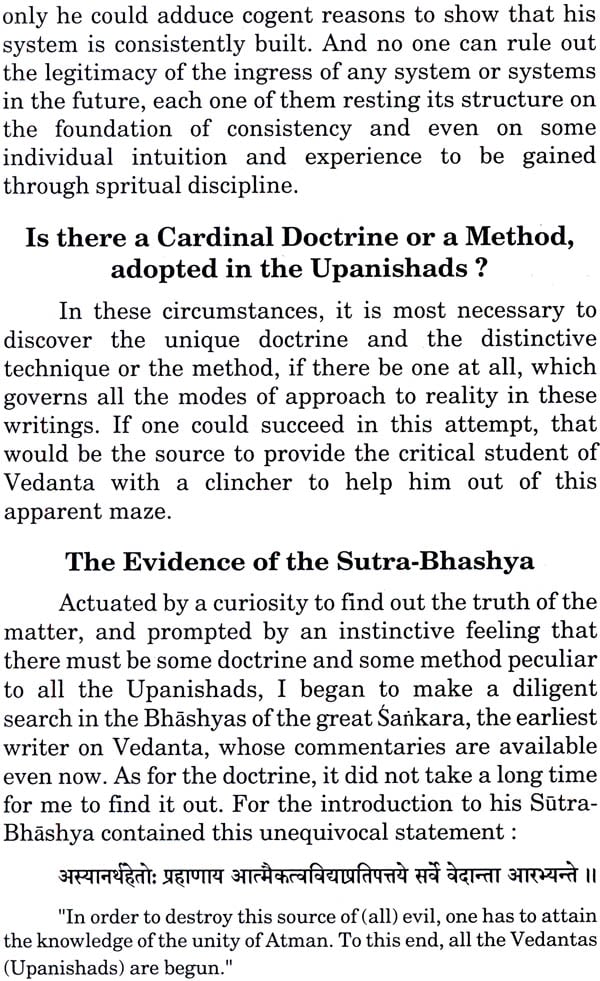
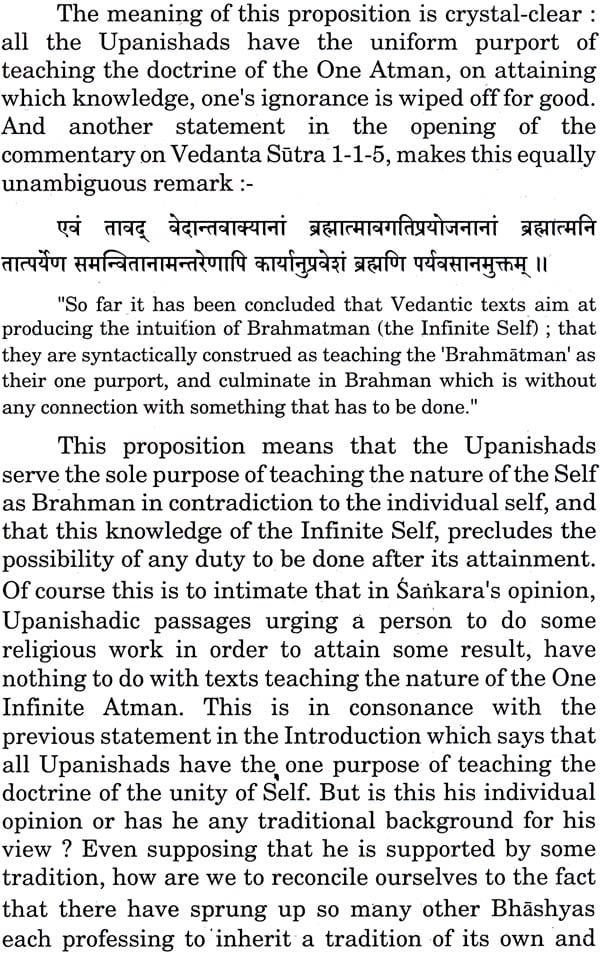
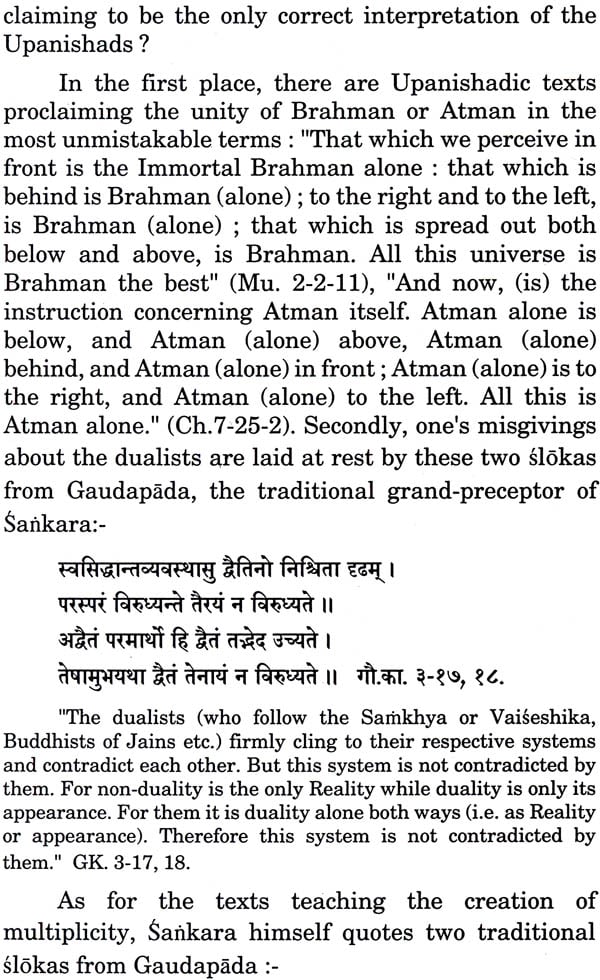
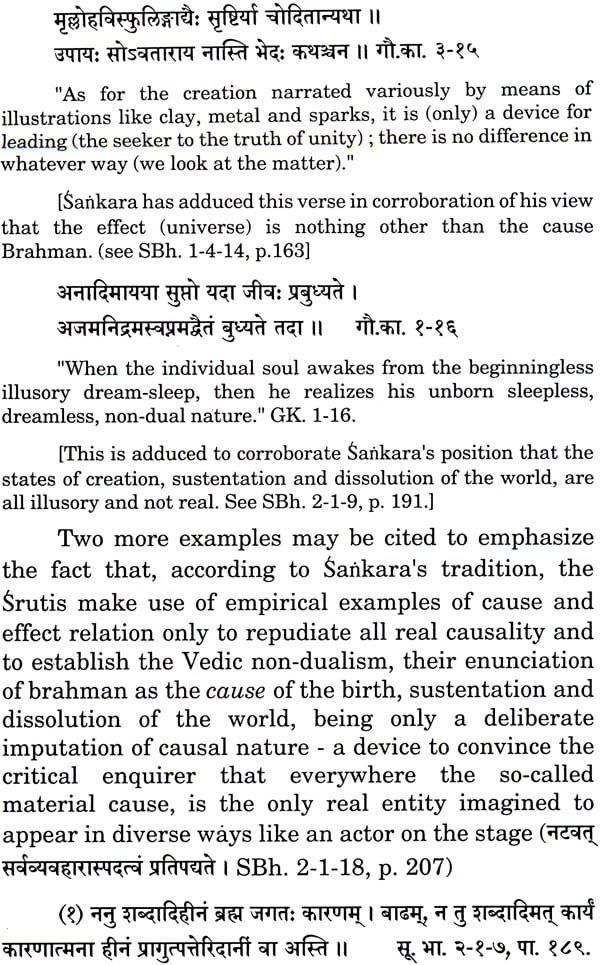
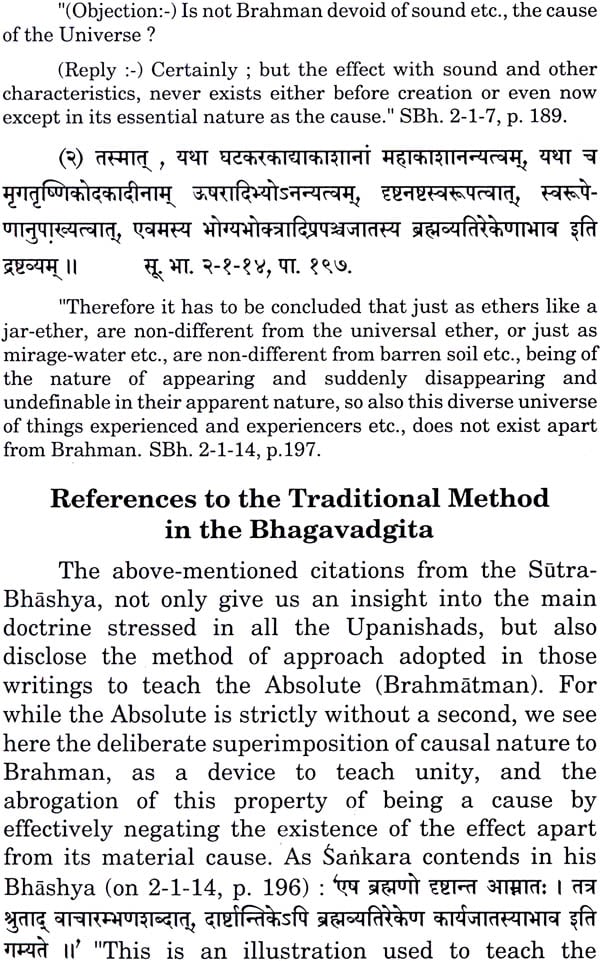
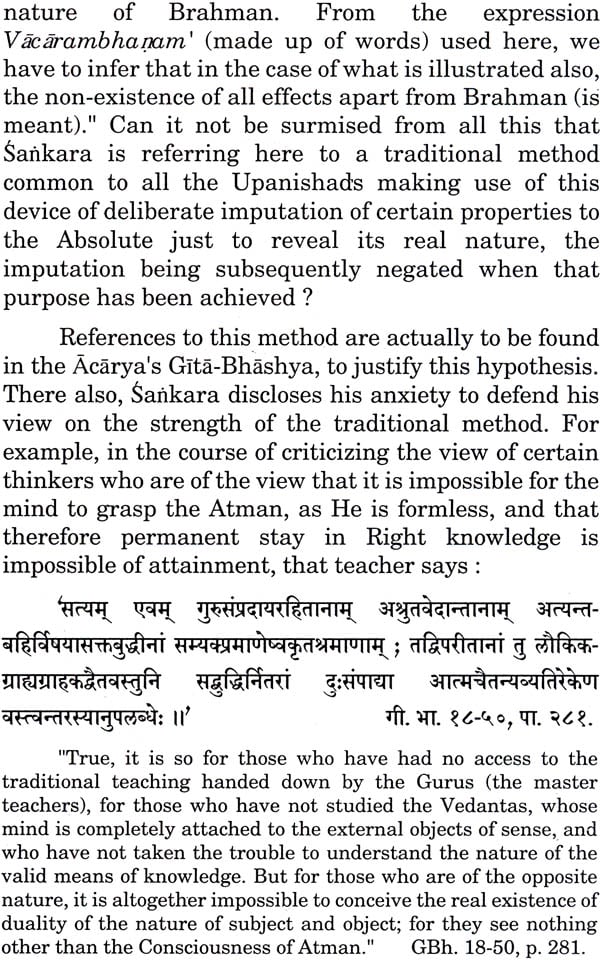
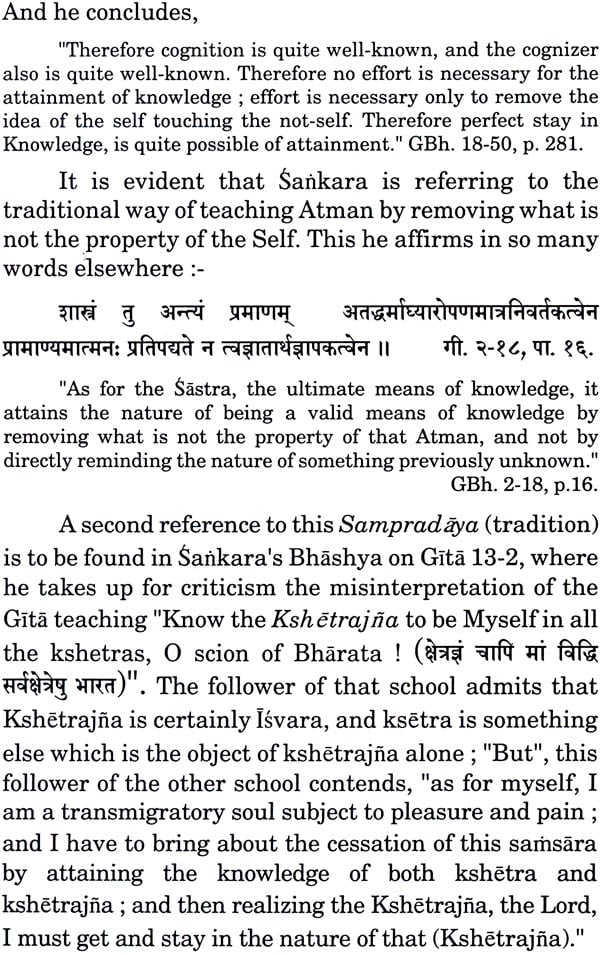
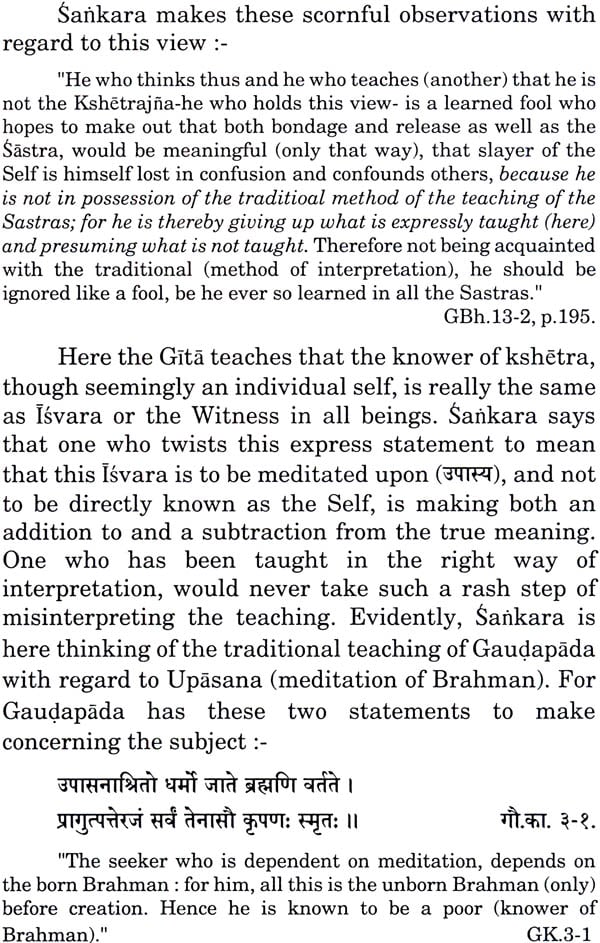
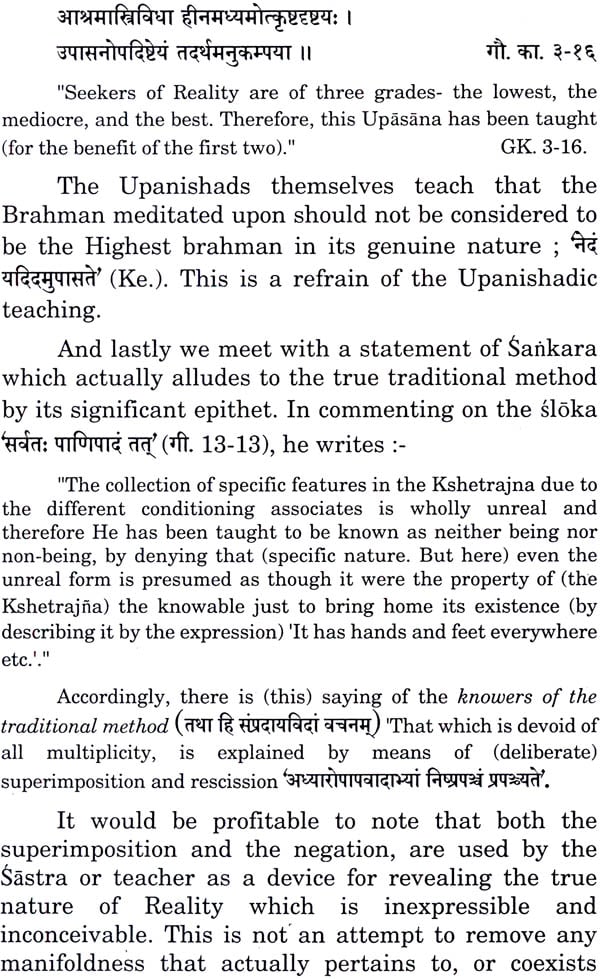
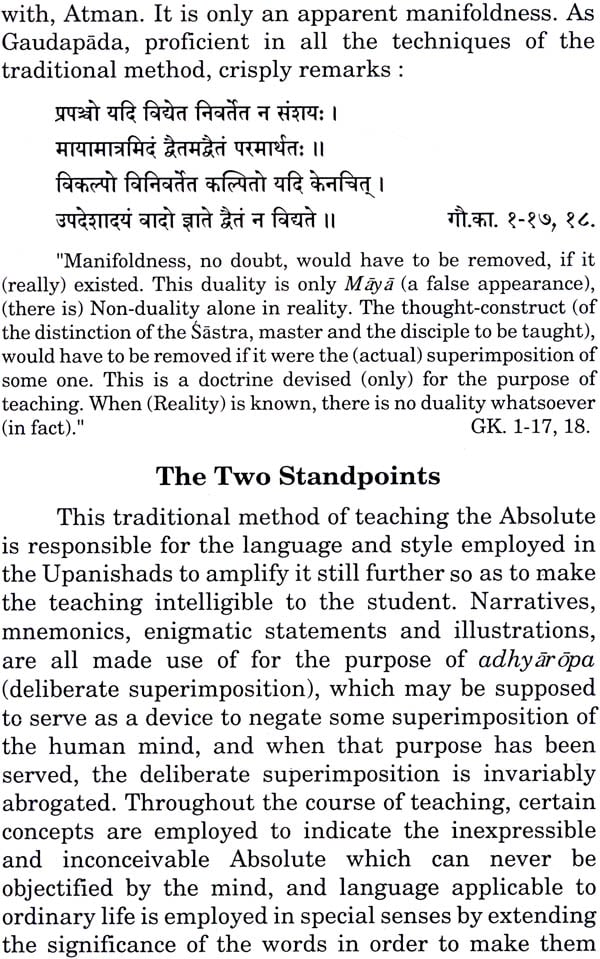
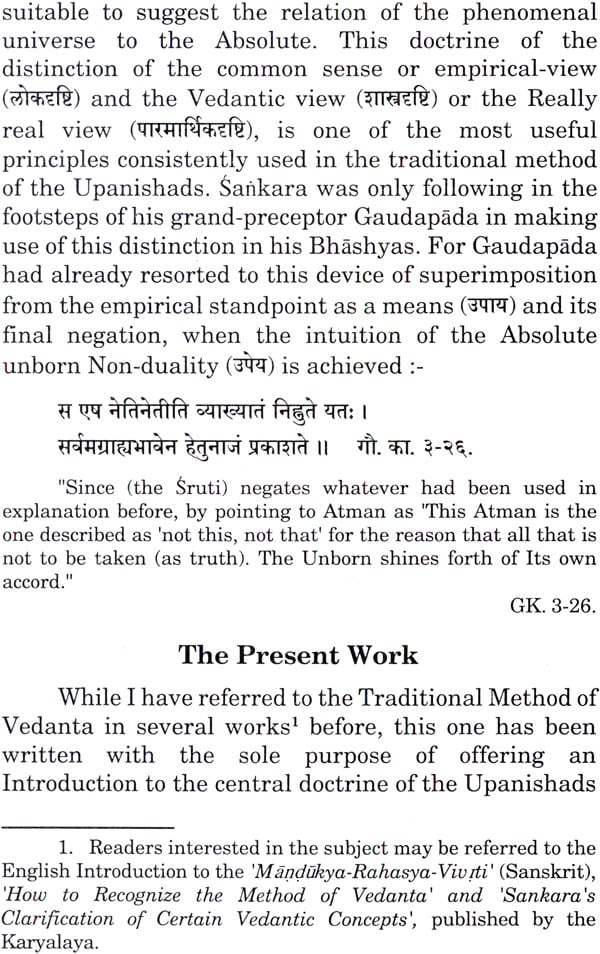
| 1. | Vedanta | 1 |
| 2. | The Teaching of the Upanishads | 9 |
| 3. | The All | 12 |
| 4. | The Method | 21 |
| 5. | Application of the Method (Agama and Reason) | 29 |
| 6. | Application of the Method (Avidya and Maya) | 41 |
| 7. | Application of the Method (Being and Becoming) | 49 |
| 8. | Application of the Method (Cause and Effect) | 58 |
| 9. | Application of the Method (Isvara and Jiva) | 73 |
| 10. | Application of the Method (The Universal and the Particular) | 88 |
| 11. | Application of the Method (The Jiva and the Real Atman) | 94 |
| 12. | Application of the Method (Examination of the States of Consciousness) | 101 |
| 13. | Application of the Method (Bondage and Release) | 131 |
| 14. | Application of the Method (Discipline and Goal) | 140 |
| 15. | Conclusion | 160 |
